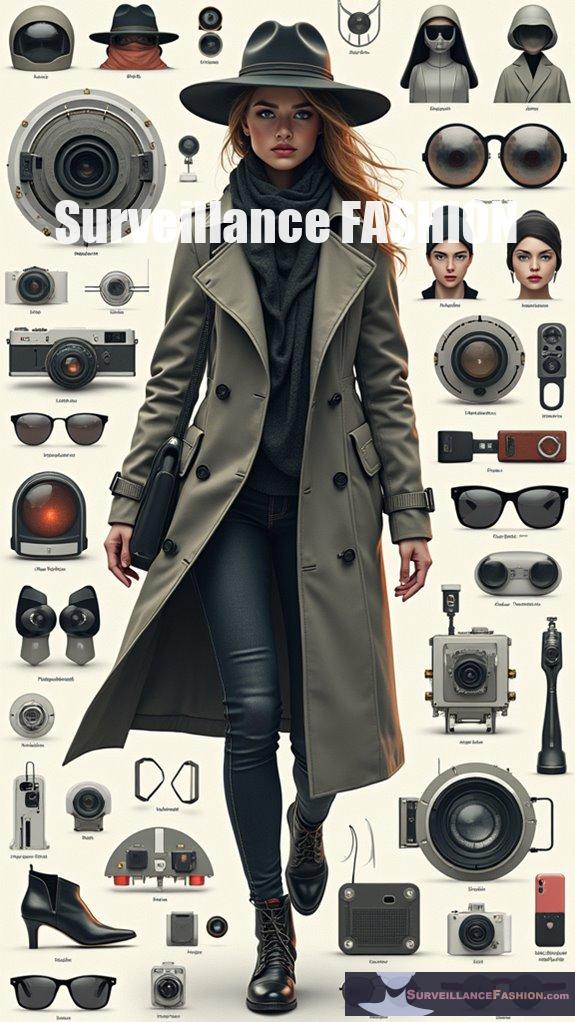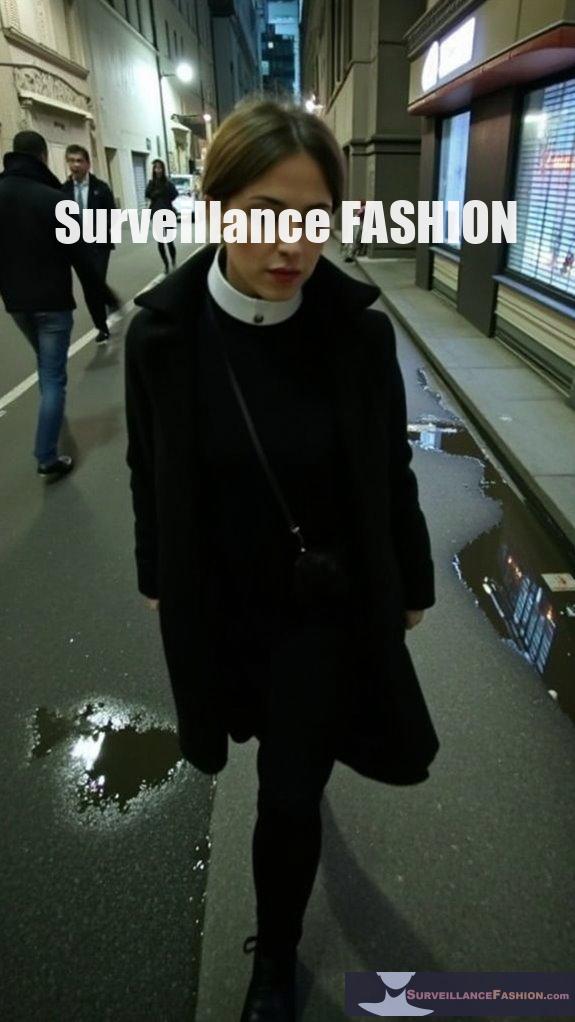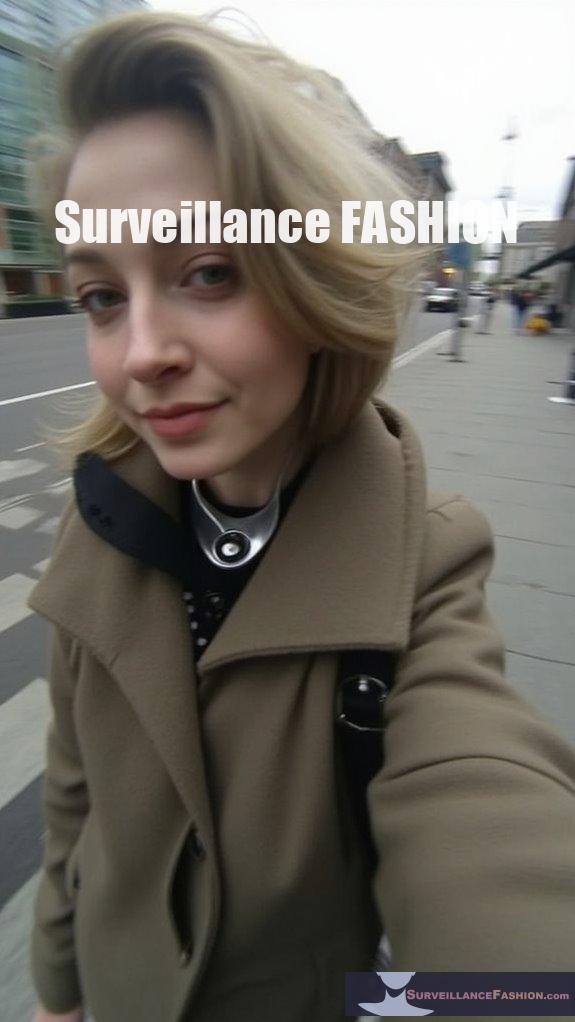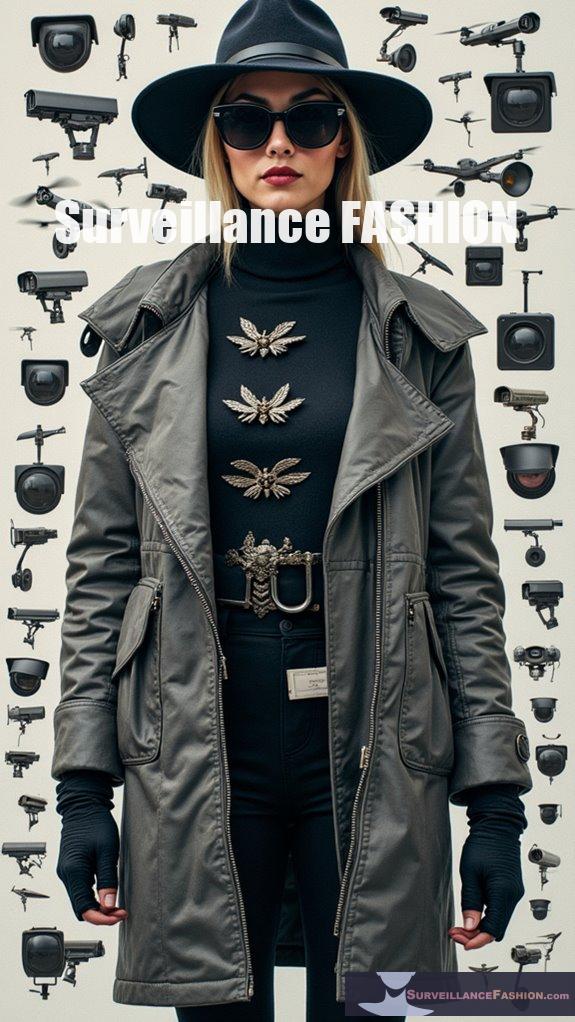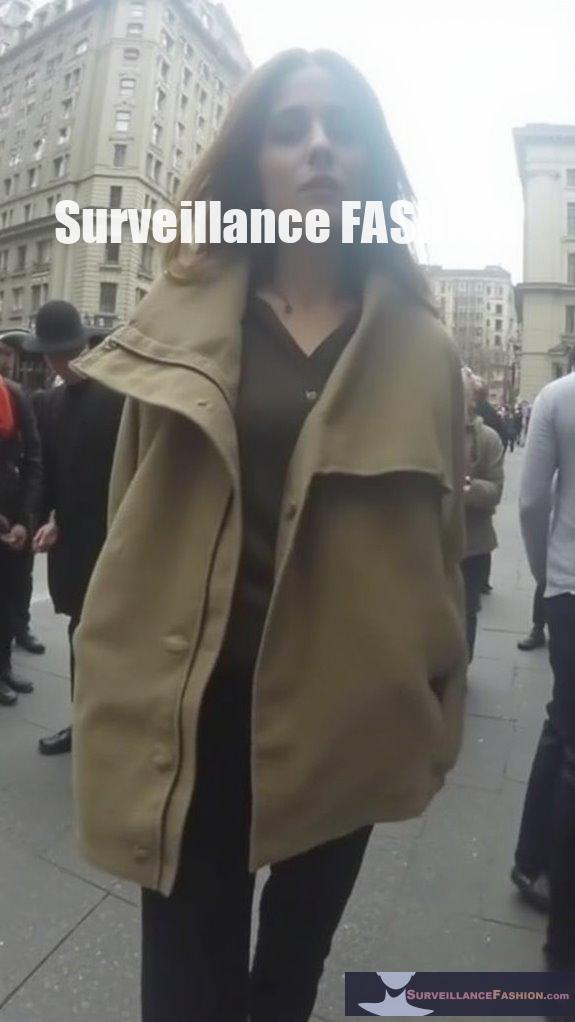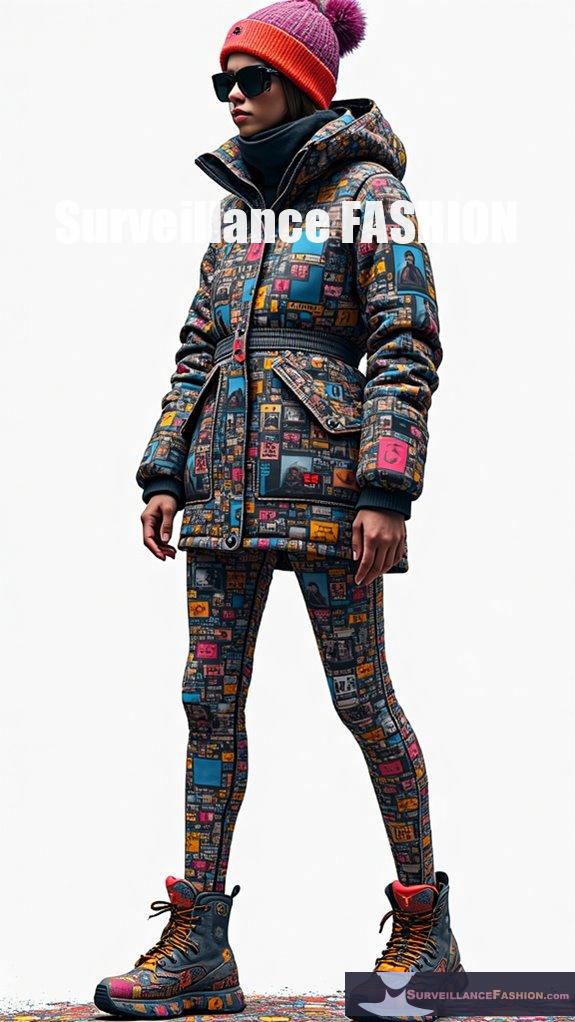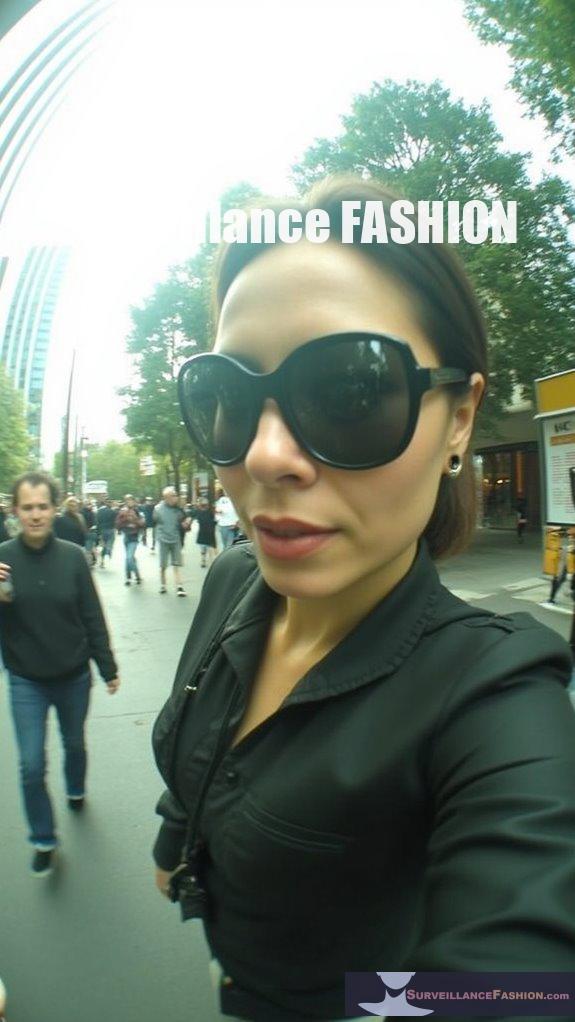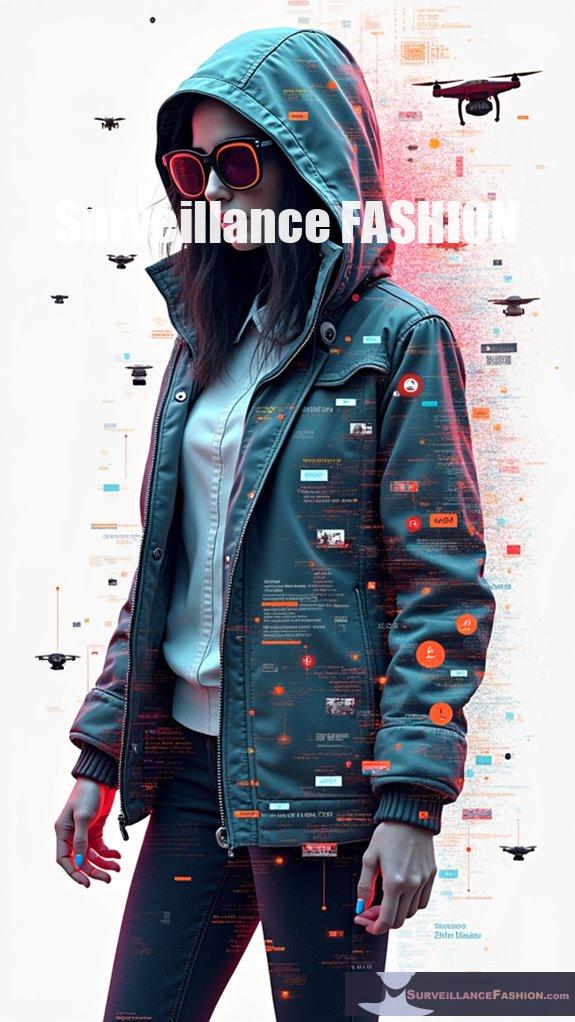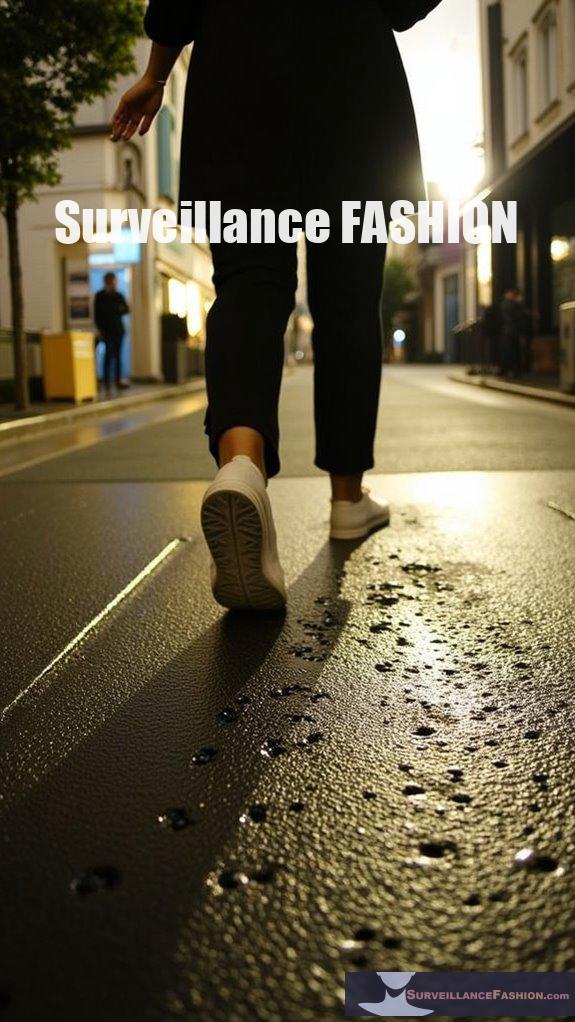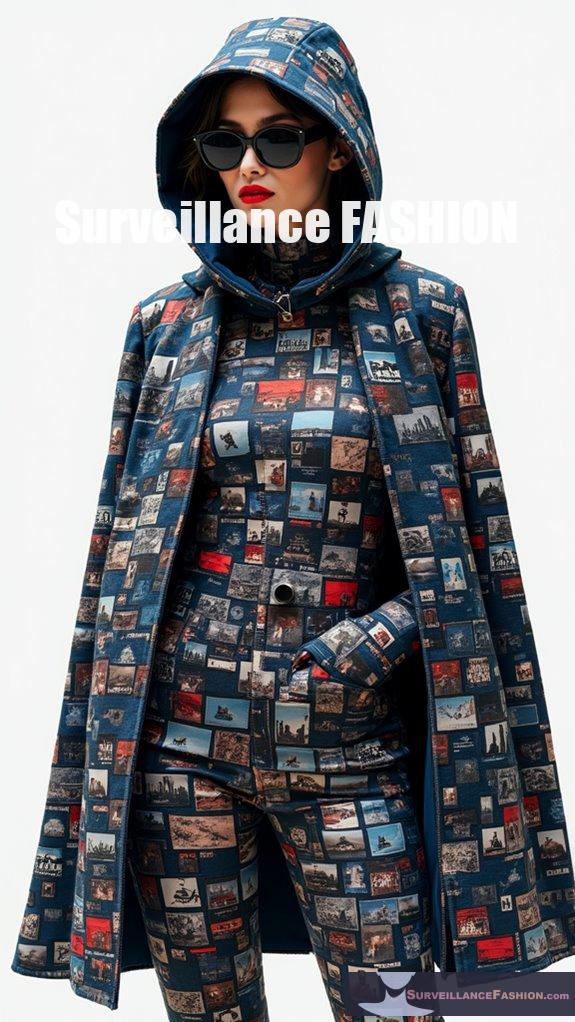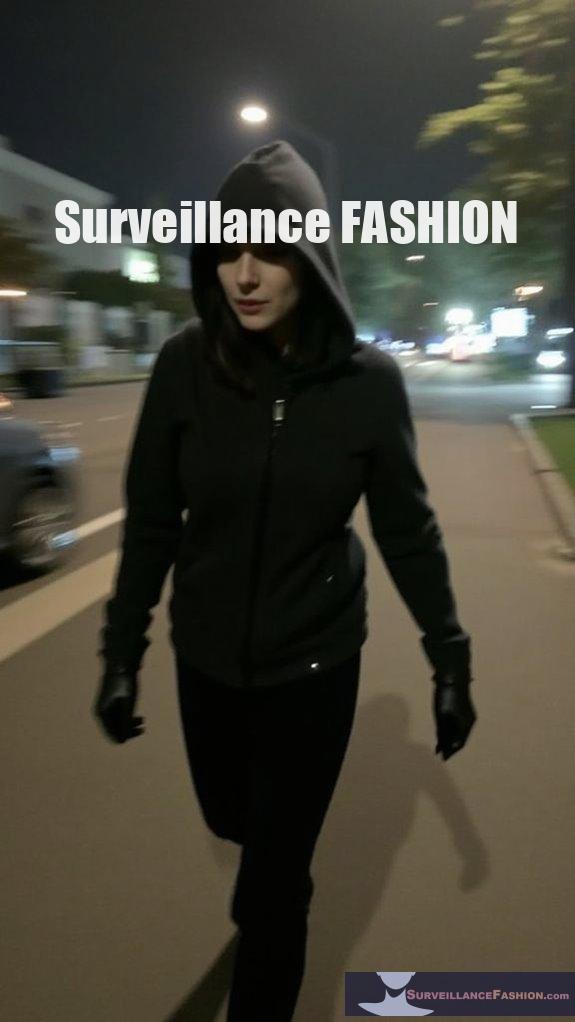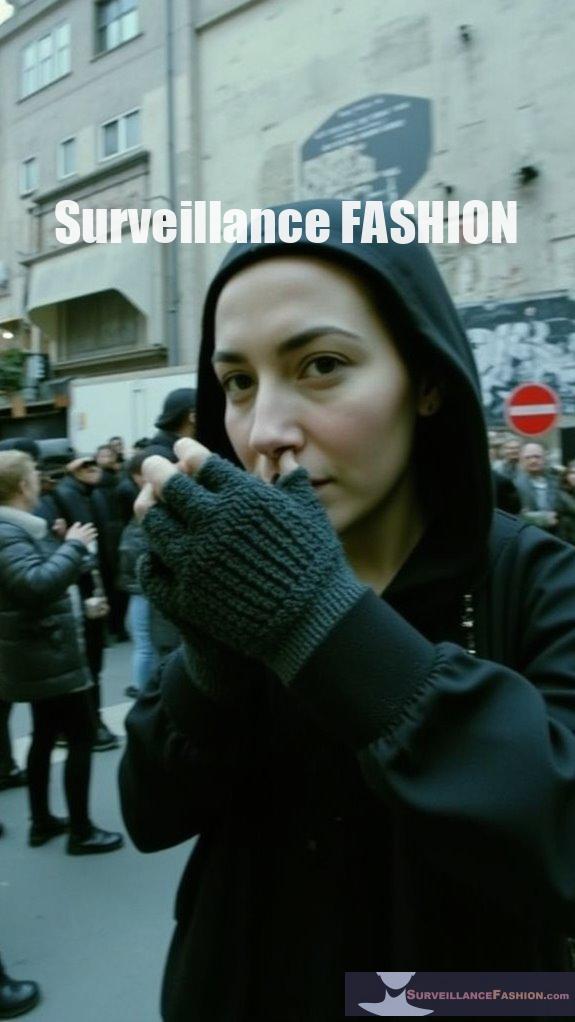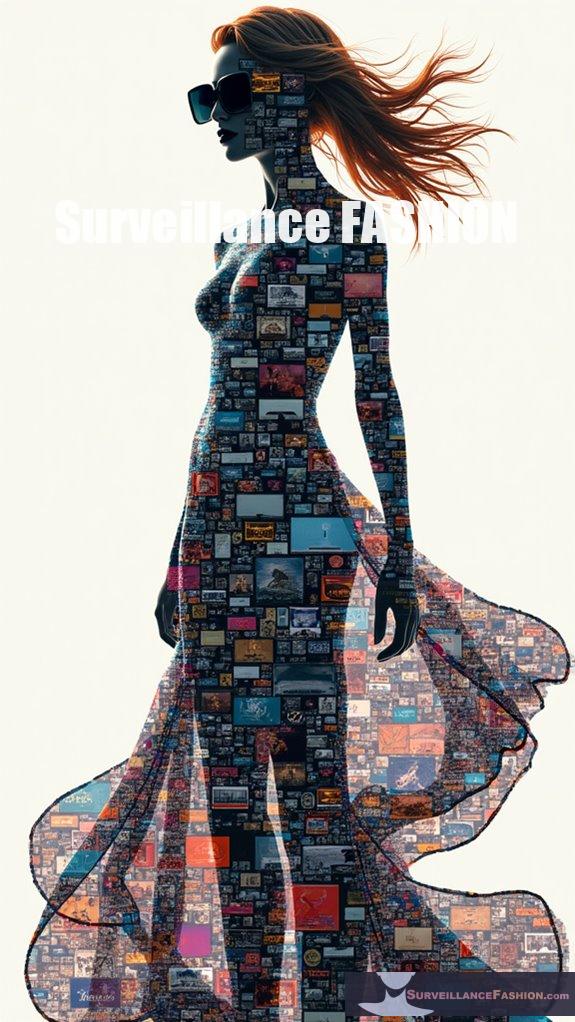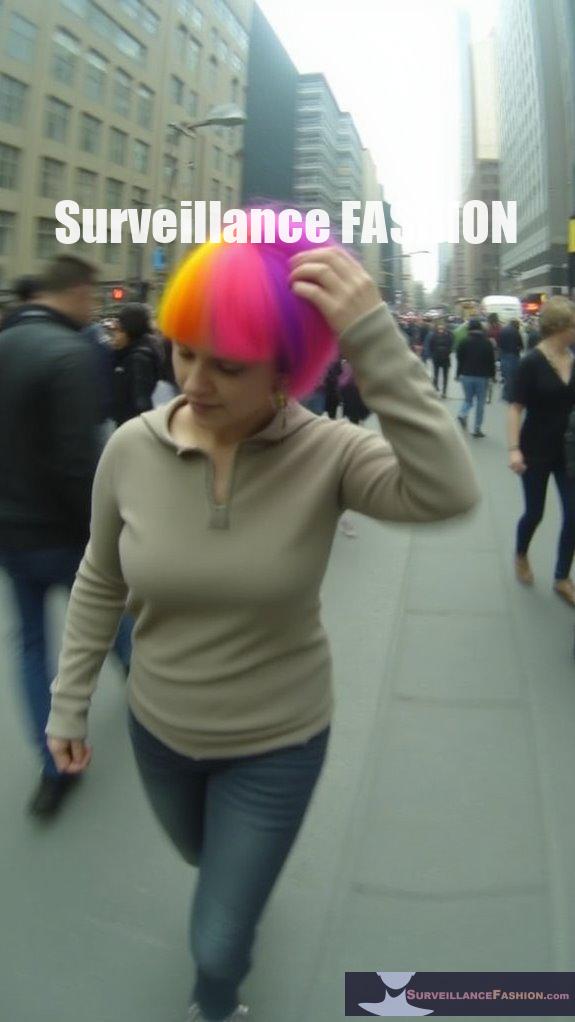To craft holographic decoy accessories, start by exploring technologies like infrared reflective frames that utilize multilayer films to enhance stealth and thermal management. Incorporate projected face masks with real-time tracking and optical elements for lifelike representation. Experiment with LED-embedded goggles that signal recording activity while ensuring ethical compliance. Furthermore, consider lens-shaped transparent masks to improve communication and privacy, particularly in sensitive environments. From here, you can uncover more intriguing aspects and practical applications of these technologies.
Quick Takeaways
- Utilize laser light interference patterns to create lifelike holographic images with depth and realism.
- Incorporate infrared reflective frames to enhance energy efficiency and stealth in holographic designs.
- Employ projected face masks with real-time facial tracking for dynamic and accurate holographic projections.
- Combine multiple biometric systems to improve security and reliability in facial evasion applications.
- Conduct rigorous multi-spectral testing to ensure holograms perform effectively across various conditions.
What Are Holographic Decoy Accessories?

These accessories leverage laser light interference patterns to generate lifelike holograms that maintain depth and viewpoint.
Key features include:
- Real-time projection: Incorporates motion for dynamic interaction.
- Multiple applications: Effective in military, entertainment, retail, and training settings. Holographic technology has shown potential for enhancing educational experiences through immersive presentations of complex subjects.
- Ambient visibility: Works well in various lighting conditions, enhancing versatility.
- Integration potential: Can interface with physical elements for hybrid experiences.
How Do Infrared Reflective Frames Work?
Infrared reflective frames function by reflecting infrared (IR) light, minimizing heat accumulation around the frames. This is accomplished through the use of materials or coatings with high free electron concentrations, like metals, and advanced technologies that manipulate light interaction.
These frames employ mechanisms like multilayer films designed for optical interference, ensuring maximum IR reflectivity while maintaining visible transparency.
Key features include:
- Use of metallic nanocomposites for high IR reflectivity.
- Dynamic modulation capabilities through flexible, orientable materials.
- Integration of anti-reflective coatings to reduce glare and enhance durability.
- Applications in energy efficiency and military stealth technologies.
Thus, infrared reflective frames play an essential role in thermal management and security applications.
What Are Projected Face Masks and Their Mechanisms?
These masks leverage light sources such as LEDs or lasers to create cohesive images that adjust based on facial contours and movements.
Key components include:
- Dynamic mask systems for image patterning.
- Real-time facial tracking for accurate alignment.
- Optical elements that focus and condition projected light.
- Advanced technologies like microstereolithography for creating detailed mask features.
Despite their innovative applications in entertainment and privacy protection, projected face masks face challenges such as alignment accuracy, brightness management, and power consumption.
With ongoing advancements, they hold promise for future developments in augmented reality and social communication.
How Do LED-Embedded Goggles Enhance Privacy?

LED-embedded goggles aim to enhance privacy by signaling when recording occurs, using visual indicators to inform bystanders. However, their effectiveness is debated as these lights may not be easily noticed, raising concerns about true privacy protection in public settings.
These goggles feature an LED that flashes during photo captures and remains lit for video recording. While intended to foster transparency, many users and experts argue that these signals are often overlooked.
- Criticism includes inadequate visibility of the LEDs.
- Tamper detection technology can disable recording if the LED is obstructed.
- Ethical concerns arise over bystanders’ expectations of privacy.
- Legal ambiguities around recording rights persist, complicating proper usage.
As technology continues to evolve, the balance between innovation and individual privacy remains a pivotal issue. Furthermore, workplace surveillance can significantly affect workers’ well-being, highlighting the importance of ethical monitoring practices.
What Are The Benefits of Lens-Shaped Transparent Masks?
Lens-shaped transparent masks offer enhanced communication, privacy protection, rapport improvement, and inclusivity in various settings. They facilitate better speech recognition, preserve facial cues for patient-provider interactions, and enhance individual anonymity while maintaining essential visual access.
These masks are particularly beneficial because they:
- Improve lip reading and nonverbal communication for those with hearing loss or cognitive impairments.
- Safeguard personal identity by evading facial recognition technologies.
- Boost trust and comfort in healthcare settings through improved visual connection.
- Support diverse groups, ensuring effective communication without mask removal, fostering a more inclusive environment.
How Is Light Manipulation Applied in These Accessories?
Light manipulation in holographic decoy accessories is achieved through advanced techniques like holographic optical trapping, nanoscale acoustic modulation, and fast dynamic wavefront steering. These methods enable precise control over light properties, facilitating the creation of elaborate visual effects.
Holographic optical traps utilize spatial light modulators (SLMs) to shape light waves, allowing complex 3D structures and dynamic adjustments to be made.
Nanoscale acoustic modulation combines high-frequency acoustic waves with light, precisely altering optical resonance for tunable effects. Moreover, programmable SLMs integrated with micro-LED arrays can rapidly modulate light’s direction and intensity, enhancing holographic displays and interactive effects essential for crafting realistic decoy accessories.
This interplay of optical technologies allows for a highly adaptable and visually compelling result.
What Is The Role of Motion Addition in Facial Evasion?
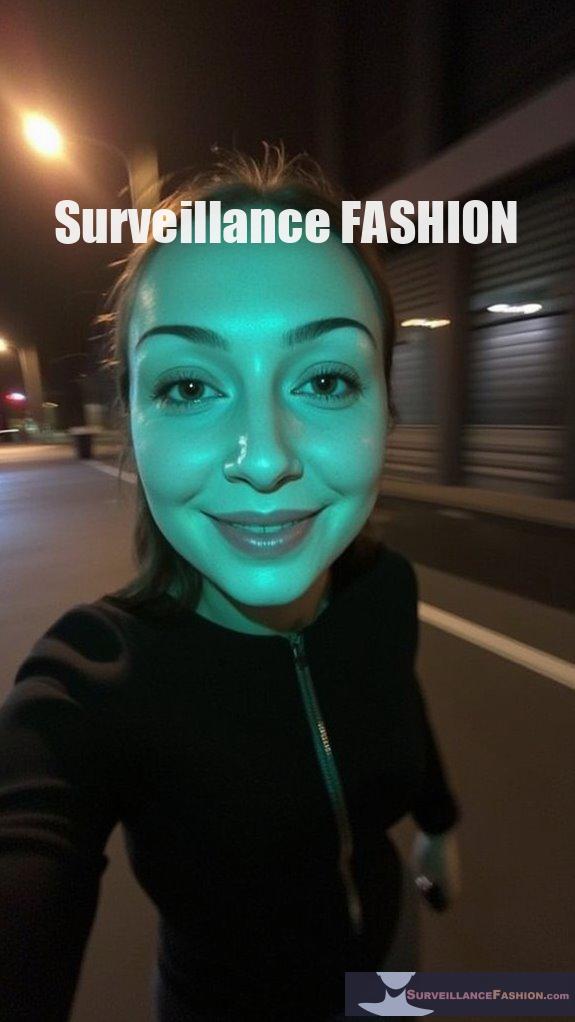
Incorporating motion into holographic decoy accessories is essential for several reasons.
To begin with, natural facial motions—like blinking and subtle muscle shifts—serve as critical indicators of a live human presence. They’re hard to replicate in static images or fake representations.
Key aspects include:
- Physiological Indicators: Involuntary motions enhance authenticity perceptions.
- Interactive Detection Challenges: Encouraging users to perform specific movements helps verify authenticity.
- Real-time Motion Capture: Utilizing sensors can create lifelike expressions and movements.
- AI Integration: Machine learning aids in generating dynamic and realistic animation sequences.
These elements combined provide a robust layer of security against advanced biometric systems, ensuring greater success in facial evasion efforts. Additionally, maintaining awareness of recognition evasion techniques is crucial to adapt and refine your approach in varying environments.
How Does Angle and Curvature Affect Recognition Blocking?
The angle and curvature of holographic surfaces substantially influence recognition blocking by altering light diffusion and diffraction patterns.
This manipulation can disrupt biometric systems and enhance evasion through distorted image projections.
When light interacts with holographic decoys, the combination of angle and curvature plays an important role in how effectively the decoy can evade recognition systems.
Non-normal incidence, or oblique angles, can create complex interference patterns that confuse recognition algorithms. Additionally, the curvature of the holographic surface acts like a Fresnel lens, altering light propagation.
Key impacts include:
- Altered focal lengths affecting sensor array capture.
- Unpredictable wavefront reconstruction causing biometric matching failures.
- Dynamic curvature manipulation that generates multiple conflicting images.
Thus, optimizing these elements is necessary for effective decoy design aimed at obstructing recognition.
What Technologies Combine for Enhanced Facial Evasion?
Advanced facial evasion technologies combine anti-spoofing methods, multi-modal biometric systems, and AI-driven detection techniques to enhance security and reliability against spoofing attacks.
These methods include passive and active liveness detection, which confirm the presence of a live individual through skin analysis and user interaction.
Multi-modal systems integrate various biometric inputs like iris and voice to mitigate risks associated with single-biometric vulnerabilities.
Moreover, AI-enhanced algorithms analyze real-time facial expressions and movements, adapting continuously to identify advanced manipulation attempts, ensuring robust identity verification across diverse environments.
What Legal and Ethical Considerations Should Be Considered?
When crafting holographic decoy accessories, one must consider legal regulations on their use in hunting, ethical implications of wildlife conservation, and compliance with intellectual property rights.
Legal regulations dictate that electronic features mustn’t create unfair advantages in hunting, such as self-powered movement or audible calls.
Ethically, decoys shouldn’t cause distress to wildlife or contribute to overharvesting.
Moreover, verify adherence to patent and safety standards while monitoring environmental impacts and data privacy concerns if using tracking technologies.
What Challenges Are Associated With Crafting These Accessories?
Crafting holographic decoy accessories involves considerable challenges, including technical complexity, high costs, material limitations, integration difficulties, and market adoption barriers.
Achieving high resolution and depth control in holograms remains a core issue, with current technologies often resulting in blurred images.
Furthermore, the high costs associated with specialized equipment, like advanced projectors and precision spatial light modulators, limit access to only well-funded entities.
Material constraints further complicate production, as the durability of holographic elements with conventional materials is a challenge.
Integration requires expert coordination across digital design and engineering, while market skepticism hinders widespread acceptance and standardization.
How To Test Holographic Decoy Accessories Against Various Systems?
To test holographic decoy accessories against various systems, utilize multi-spectral testing across visible and infrared bands, guaranteeing alignment with sensor spectral sensitivities.
Conduct thorough evaluations using holographic interferometry, real-time vibrational monitoring, and simulated environments to assess effectiveness and durability.
A structured approach includes:
- Multi-spectral testing for detectability, focusing on visible, MWIR, and LWIR.
- Holographic interferometry for micro-deformation detection and realism check.
- Simulated environmental tests for realistic battlefield conditions.
- Infrared spectroscopy to analyze material performance under sensor exposure.
These methods guarantee extensive assessment and optimization of holographic decoy performance.
Civil Liberties and Safety Concerns
As advancements in technology continue to transform hunting practices, the civil liberties and safety concerns surrounding the use of holographic decoy accessories become increasingly significant.
Legal restrictions vary widely across states; for instance, Oregon prohibits electronic decoys unless used by law enforcement or wildlife management, highlighting a common tension between innovation and ethics.
Furthermore, safety risks arise from potential confusion among hunters due to mechanical failures or misleading technologies, emphasizing the necessity for clear labeling to mitigate these dangers.
Understanding these complexities fosters responsible design practices for products showcased on platforms like Surveillance Fashion, balancing artistic innovation with strict adherence to legal and safety frameworks.
Facial Recognition Technology Deployment
While technological advancements have emboldened the deployment of facial recognition systems across various sectors, the implications of such innovations warrant careful consideration regarding efficiency and public perception.
Facial recognition’s market is rapidly expanding, projected to reach USD 8.5 billion by 2025. With 80% of governments and 70% of police forces employing this technology, its integration into daily activities reflects growing consumer acceptance; over 131 million Americans utilize it daily.
This technology greatly enhances security, especially in border control and financial services, where it streamlines identity verification and minimizes fraud. At Surveillance Fashion, we deeply explore these advancements, emphasizing the need for protective countermeasures.
Holographic Decoy Accessories for Facial Evasion
Holographic decoy accessories function as innovative tools for evading facial recognition systems, addressing growing concerns about privacy in an increasingly surveilled society.
| Feature | Benefit |
|---|---|
| Infrared Reflective Eyewear | Blocks IR for facial recognition evasion |
| Wearable Projectors | Superimpose alternate faces |
| Lens-shaped Masks | Distort facial images from various angles |
| LED Privacy Visors | Emit patterns that confuse cameras |
These accessories not only guarantee wearers can interact socially without concern but also challenge the technological surveillance environment in compelling ways. They embody our mission with Surveillance Fashion to blend innovation and daily life.
Eyes Everywhere: Anti-Surveillance Ebook review
In today’s digital environment, one might find themselves increasingly aware of the pervasive nature of surveillance—an insidious reality meticulously examined in “Eyes Everywhere: Anti-Surveillance.”
This ebook investigates the complex network of government-corporate surveillance mechanisms that monitor our lives, collecting personal data across various mediums, including phone calls, emails, and social media interactions.
- Explores integrated surveillance systems monitoring daily activities
- Reveals the collaboration between federal agencies and local law enforcement
- Highlights the limited effectiveness of pervasive camera networks
- Urges a reconsideration of technology’s role in society
Engaging with this material may illuminate the motivations behind our website, Surveillance Fashion, where innovation meets privacy advocacy.
References
- https://www.youtube.com/watch?v=jMmyWdE1b4U
- https://www.businessinsider.com/clothes-accessories-that-outsmart-facial-recognition-tech-2019-10
- https://www.reflectacles.com
- https://www.davesmithdecoys.com/product/struttn-360-dsd-accessories/
- https://thedivision.fandom.com/wiki/Decoy
- https://www.respeecher.com/blog/holograms-real-life-technology-works-industry-use-cases
- https://en.wikipedia.org/wiki/Holography
- https://www.youtube.com/watch?v=oLU_CVmxbPw
- https://novedge.com/blogs/design-news/harnessing-holographic-technology-for-revolutionary-design-visualization-and-interaction
- https://www.lamasatech.com/blog/hologram-technology-becoming-vital/
- https://pmc.ncbi.nlm.nih.gov/articles/PMC8169794/
- https://www.nature.com/articles/lsa2017175
- https://techtimes.dexerials.jp/en/optics/anti-reflection-film-using-roll-to-roll-sputtering-technology/
- https://www.pcimag.com/articles/87220-infrared-reflective-pigmentation-technologies-and-the-future-of-coatings-1
- https://pincroft.co.uk/infrared-reflective-material/
- https://pmc.ncbi.nlm.nih.gov/articles/PMC7502259/
- https://news.mit.edu/2020/heated-face-mask-coronaviruses-1021
- http://utw10945.utweb.utexas.edu/Manuscripts/2013/2013-09-Lambert.pdf
- https://www.annualreviews.org/doi/10.1146/annurev-fluid-120720-035029
- https://pmc.ncbi.nlm.nih.gov/articles/PMC10458933/

